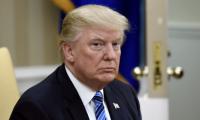If the government was listening to the State Bank of Pakistan (SBP) rather than the World Bank, it would be in a much more somber mood. While there has been much patting each other on the back over the Ease of Investment ranking improvement, the SBP's annual report for the year 2018-19 paints a far starker picture. The report concludes that Pakistan has been off the radar for direct investment for a long time, despite the technical improvements in its trade and investment regimes, as well as its large domestic market. Not only has foreign investment dropped, there has also been a drop in domestic investment, which has a serious impact on the health of the economy.
The reduction in investment can be traced to the last two years of economic slowdown and policy fluctuation and has affected both the industrial and agricultural sectors. While the SBP wants to explain what it calls ‘persistent under-investment,’ it refuses to agree with industrialists who have blamed the high interest rates set by the bank itself. The numbers themselves are getting worse. Investment in the country has dropped 3.3 percentage points in the last two decades to 15.4 percent. In effect, it means that Pakistan is the only Asian country with a falling growth potential. These are words that the government needs to take cognition of. The SBP has quoted the World Bank to argue that Pakistan will not be able to reach middle-income status in the next three decades – unless the rate of investment improves drastically to 25 percent. With there being so fascination for the World Bank at the moment, it would make more sense to talk about these projections, rather than the theoretical belief that Pakistan is ripe for investment. In defending the decision to depreciate the currency and increase the interest rate, the SBP has claimed that the investment-to-GDP ratio has remained the same as it was during the low interest rate period in the last decade.
This is no doubt something to think about – but perhaps it is important to remember that low interest rates could not spur investment at a time when the country was facing severe power shortages. It was only in the late PML-N period where the investment potential in the country was beginning to show, but opening up the trade policy hurt the country after the current account deficit began to get out of control. Open trade was to the benefit of foreign producers, rather than domestic ones. The only way domestic demand for imported goods has been curbed is through bringing the economy to a grinding stop. The SBP report admits as much when it refers to collapsing demand in the agricultural and industrial sectors. This would mean that the reduction in the current account deficit is evidence of a sick economy, rather than a healthy one. The government would do well to read the SBP report seriously – as would SBP officials themselves.
India's Prime Minister Narendra Modi speaks after releasing the Bharatiya Janata Party's manifesto ahead of country's...
Prime Minister Shehbaz Sharif, Pakistan Poeples Party Co-chairperson Asif Ali Zardari, JUI-F chief Maulana Fazlur...
Shahzaib Rind, Pakistan's martial arts fighter from Quetta. — Facebook/shahzaibrindhofficial/FileShahzaib Rind has...
A representational image showing women at a market. — AFP/FileIn the six weeks since he assumed office, not only has...
Country witnessed 432 violence-linked fatalities and 370 injuries among civilians, security personnel, and outlaws
During Raisi’s visit, Iran and Pakistan signed a total of eight accords on varying subjects to enhance cooperation...







